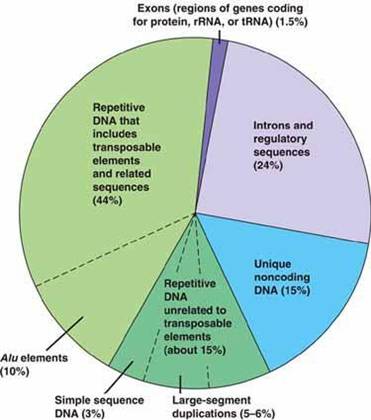|
Genome organization refers to the sequential, not the structural organization of the genome. Besides the coding exons, the non-coding DNA in Eukaryotes may fall in the following classes.
Introns. They are DNA sequences inserted between the exons and found in the ORF. They are spliced after the first level of transcription. Most introns are junk inserted within genes. Pseudogenes. 'Dead', non-functional copies of genes present elsewhere in the genome, but no longer of any use Retropseudogenes. Like pseudogenes, but have been processed, i.e. lack introns. Produced by the action of reverse transcriptase (RT) on mRNA, and subsequent incorporation of the cDNA into the genome. Transposons. Jumping genes, which splice themselves in and out of the genome (in DNA form) randomly, by the action of transposase. Retrotransposons. Transcribed into an mRNA, which encodes an RT enzyme, which then copies the mRNA back to DNA and incorporates it into the genome.
